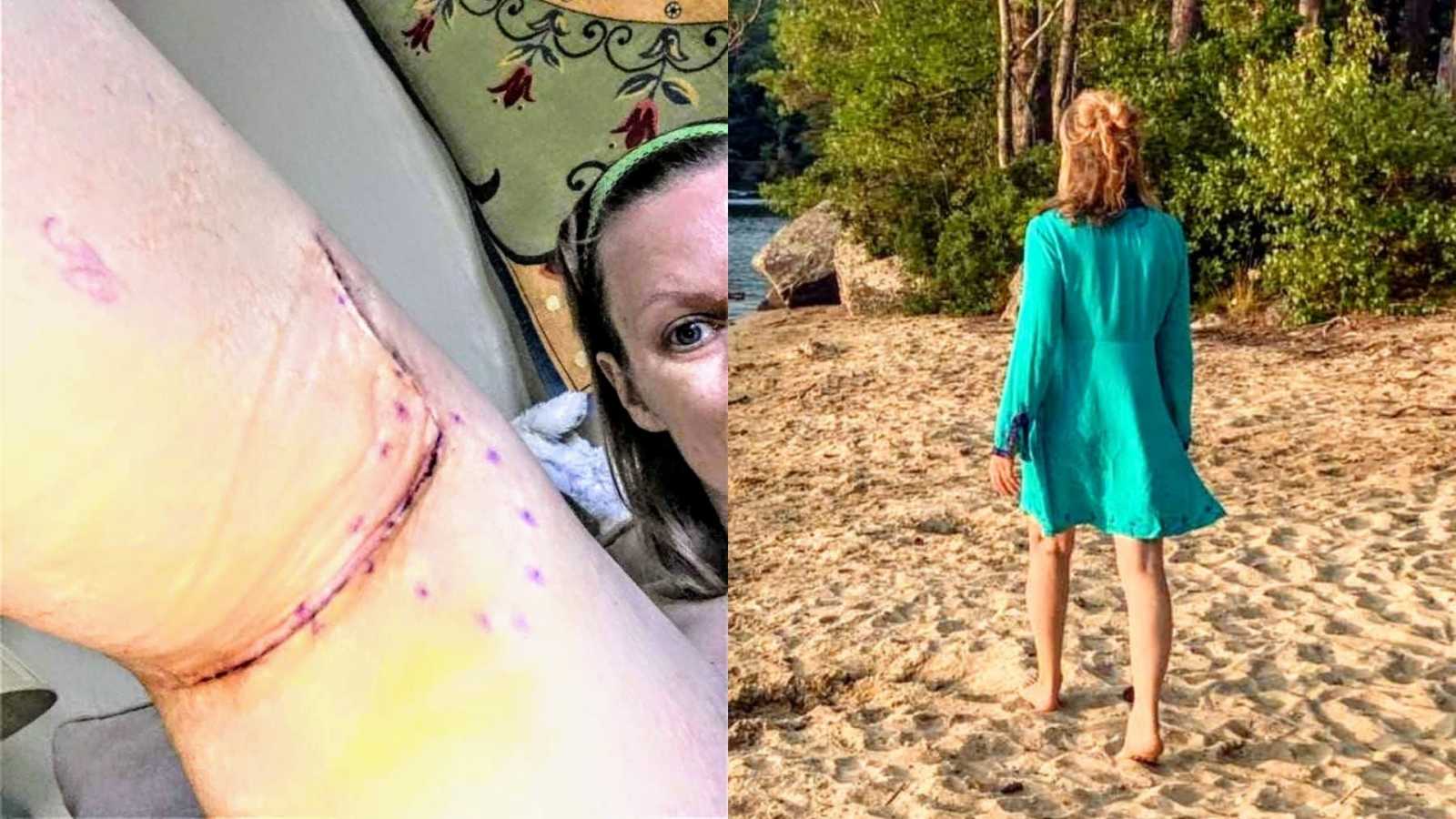Disclaimer: This story contains graphic images of injuries.
“Even with my mask on, from my eyes I am beaming. I am so happy it feels like I’m electric. See, there’s this grassy little hill near where I live? Today I ran up that hill. Ran! For the first time in 29 years, I ran.
The last time I was able to run was 1991. Running was everything to me back then. I was an anxious 16 year old kid, and the rhythmic sound of my feet beating the pavement, my breathing steady and deep, my laser focus on the path ahead—it was like meditation to me. Being active calmed my nerves, and as a child, it was really the only time I felt free from the stress of whatever was going on at home and school.

But 1991, 29 years ago, was the very last time I ran. It was a beautiful September day and I had just made the varsity soccer team. I trained all summer with long distance running, and now I was playing defense in a scrimmage against another school in the lead-up to the official season.
I had been taped up that afternoon for what we thought were ‘shin splints.’ I remember running around, my eye on the ball ready to defend our goal when it happened. Suddenly I could not lift my right foot and I tripped over it. And then the pain came; teammates later told me I just crumpled to the ground and had to be carried off the field. The pain was so intense I could not really see or speak. It turns out those ‘shin splints’ were actually the early warning signs of the medical emergency following the pain: Acute Exertional Compartment Syndrome.
‘She’s being a crybaby,’ the attending physician at the ER told my mother that day. I remember him well; he had a brown pony-tail and a white coat. ‘She has no breaks to the bone,’ he said. ‘Her pedal pulse is fine—there’s nothing wrong with her. She’s wasting our time and you should take her home.’
Because there was only one case of this particular syndrome in the medical literature before me, the second case, I was misdiagnosed as being a hysterical, hypochondriacal teenage girl and sent home. Little did we know, there was only a certain number of hours to operate to relieve the unsustainably increasing pressure in the affected muscles before I risked losing the limb. In those lost hours, roughly 70% of my tibialis anterior muscle, the one that lifts your foot to walk, died.
‘You are a lucky girl,’ my surgeon told me in his post-op rounds one day after my emergency surgery. He put two fingers together in a pinch and said, ‘We were this close to amputating that leg today, but decided not to, given you are an otherwise healthy 16 year-old kid.’

The wound in my right leg splayed from knee to ankle and was five inches at its widest, representing the amount of pressure was in that muscle. Every morning, they would wheel me down to the rehabilitation unit and a couple of nurses would help me lower into a steel whirlpool tub where I was to sit. Necrotic flesh peeled away from my exposed wound and floated like confetti all around me in the bubbling water as I sat in excruciating pain. I will never forget the sight or the smell of this grisly morning ritual.
After six intensive weeks in the hospital monitoring for potentially lethal infections, I lived with an open wound for a year, during which time I was either in bed or a wheelchair. I also had to learn a new ritual—performing the nauseatingly painful dressing changes three times a day designed to keep infection at bay. During the day, when my mom was at work securing the health insurance we relied on, I spent my junior year of high school being tutored in the school infirmary. I tried desperately not to fall behind, struggling to maintain some sense of normalcy. Friends fell away during that time, and I watched as my old life disappeared. ‘Patient’ became my new identity.
As ‘luck’ would have it, as soon as I was out of a wheelchair and up onto crutches later that same year, the syndrome developed in my ‘good’ leg. My doctor laughed in astonishment just after he struck the pressure gauge, which looked like a meat thermometer, into the muscle to confirm the diagnosis. ‘You outta play the lottery, kid! You hit the proverbial jackpot, not once, but twice. What are the odds!’ My life became so consumed by my right and left legs—in the post-op haze, I named them ‘Buddy’ and ‘Gimp’ respectively.
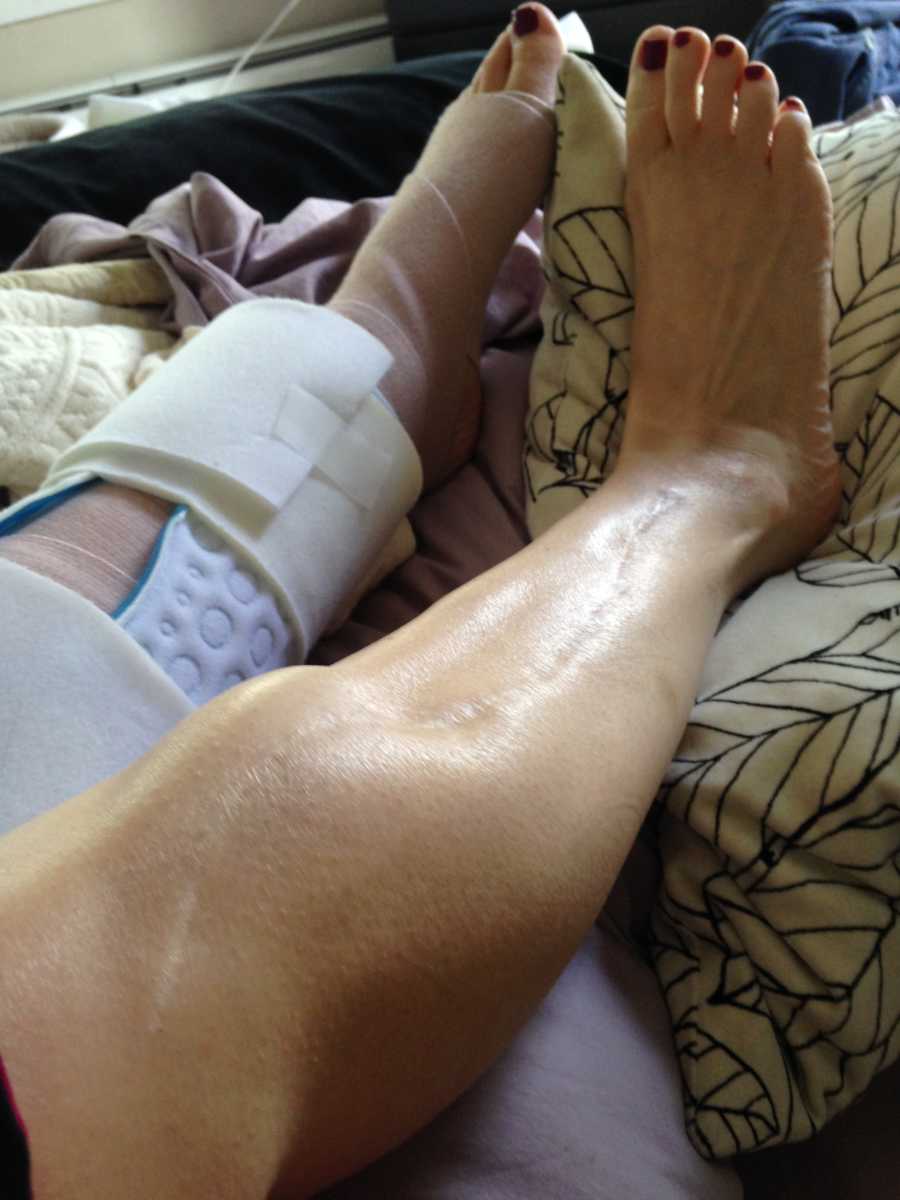
In the years following those terrifying early days, I had 16 major surgeries, each with year-long recoveries, about 9 years on crutches, countless rounds of physical therapy, and multiple long medical leaves, during which I was often bed-bound in debilitating pain. The original syndrome had been ‘fixed,’ but strange new diagnoses took its place: Regional Pain Syndrome, Chronic Fatigue Syndrome, Fibromuscular Dysplasia, Complex Regional Pain Syndrome, Mast Cell Activation Disorder, and, unsurprisingly, PTSD, Depression, and Anxiety.
‘You should be awarded an honorary MD after all the diagnoses you’ve gotten!’ my primary care physician joked every year at my annual exam. She was not far off though, because I did earn a PhD over the years as I studied and taught Medical Sociology. I came to rely on being able to ‘run’ with my mind—intellectualizing the incomprehensible, engaging my students in discussions about the many kinds of social suffering happening to people whose reality is dismissed, disbelieved, or questioned by others.
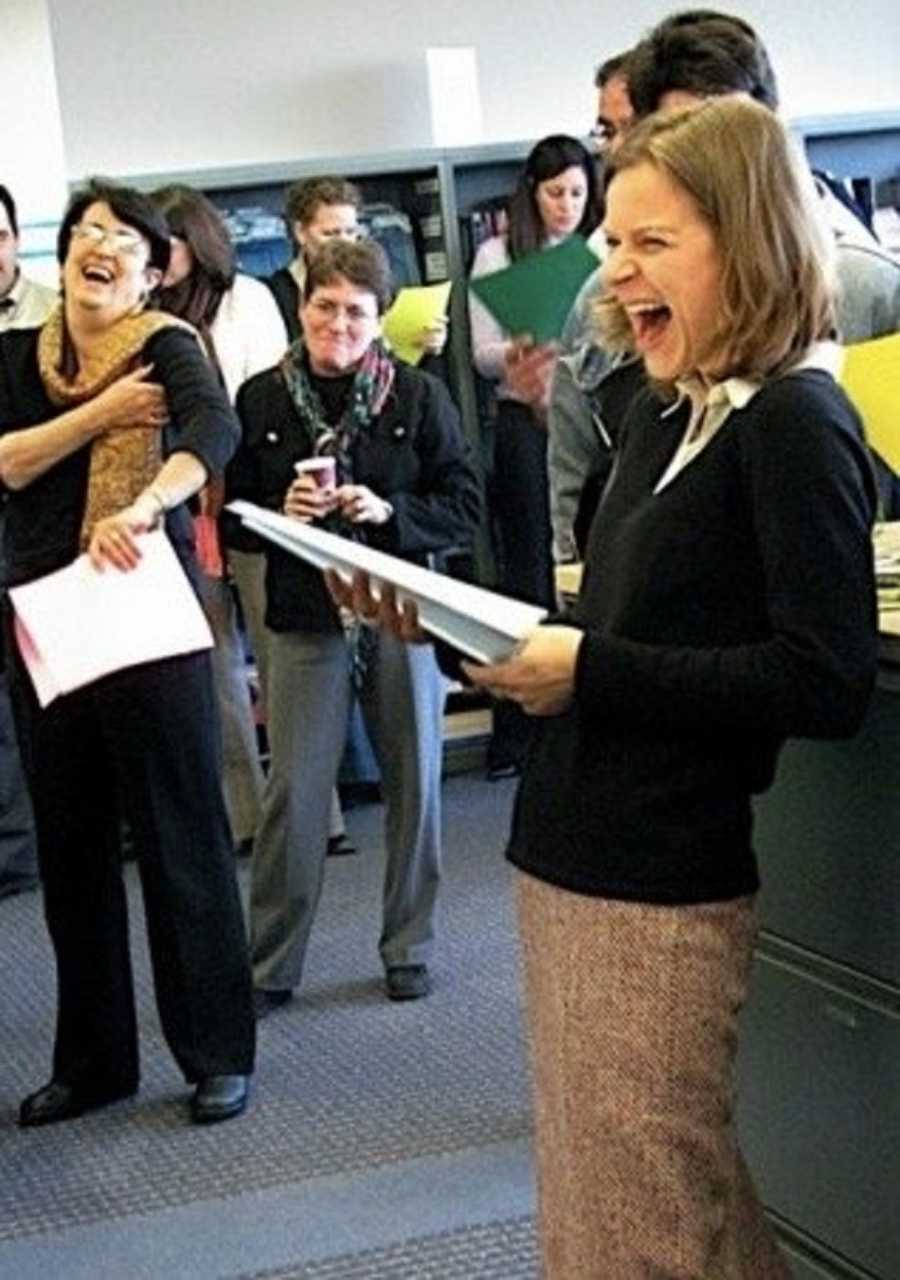
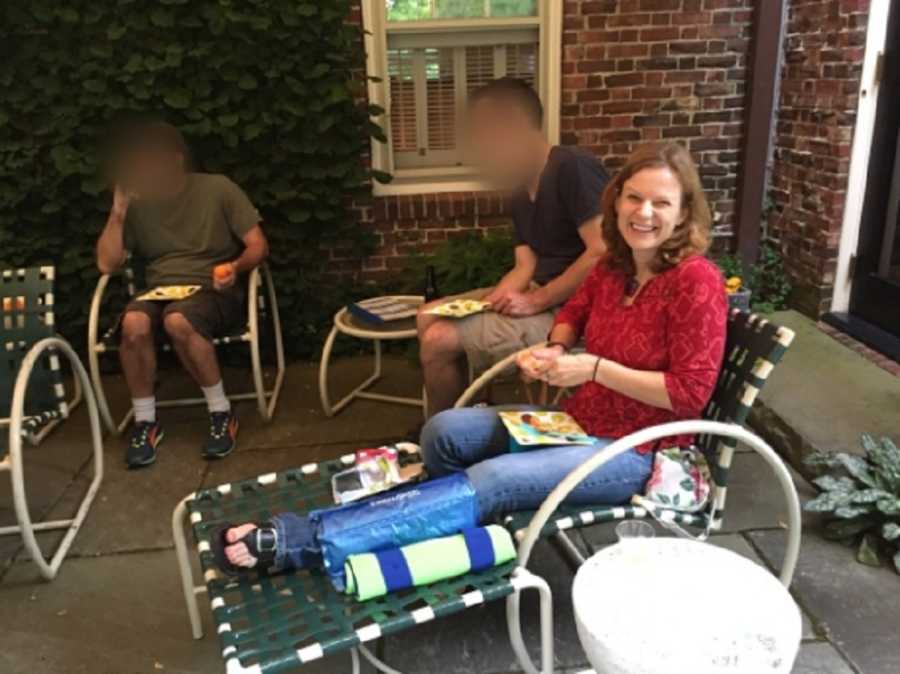
In December 2018 I had a ‘last hope’ surgery on Christmas Eve to address a new nerve entrapment. The pain had centralized in a spot behind my left knee. I truly believed this surgery would free the nerve from the scar tissue of previous surgeries and relieve me from the pain. It did not. In fact, this surgery made the pain far worse.
I became more or less housebound by the unrelenting nerve pain—searing and radiating and screaming so loudly it felt like there was nothing left of the whole universe but my leg. The pain, a constant 8 or 9 on a scale of 10, crowded out other thoughts and feelings. It was as if I did not exist anymore. There was no Lara. Only my leg, only the pain.

As I am allergic to pain medications, the only relief I had was ice, and yet there were many nights it got so bad I could not get from bed to freezer for fresh ice. All I could do was stare at the ceiling and try to keep breathing. By morning, the rough patches I found on the skin at the corners of my eyes told me I had been crying in my sleep again.
My sister gave me a card I had taped by my bed with a quote by Louis L’Amour: ‘There will come a time when you feel everything is finished. That will be the beginning.’ I read this card over and over during those dark nights of the soul. I relied on the love of my extraordinary family to supply me with the hope I no longer felt. I wanted to believe I would emerge from this nightmare of pain and find life again.
The thing about chronic pain like this is it burns a pathway in your brain. It’s like a raindrop making its way down a window pane—it finds a path taken by a previous raindrop, as does the next one. Or like a truck on a dirt road, driving through the mud, forming deep grooves into the ground, grooves catching the wheels of the next car and get even deeper and harder to avoid. The more frequently that path is travelled, the larger the grooves get and the harder it is for your brain to find a way to a different path.
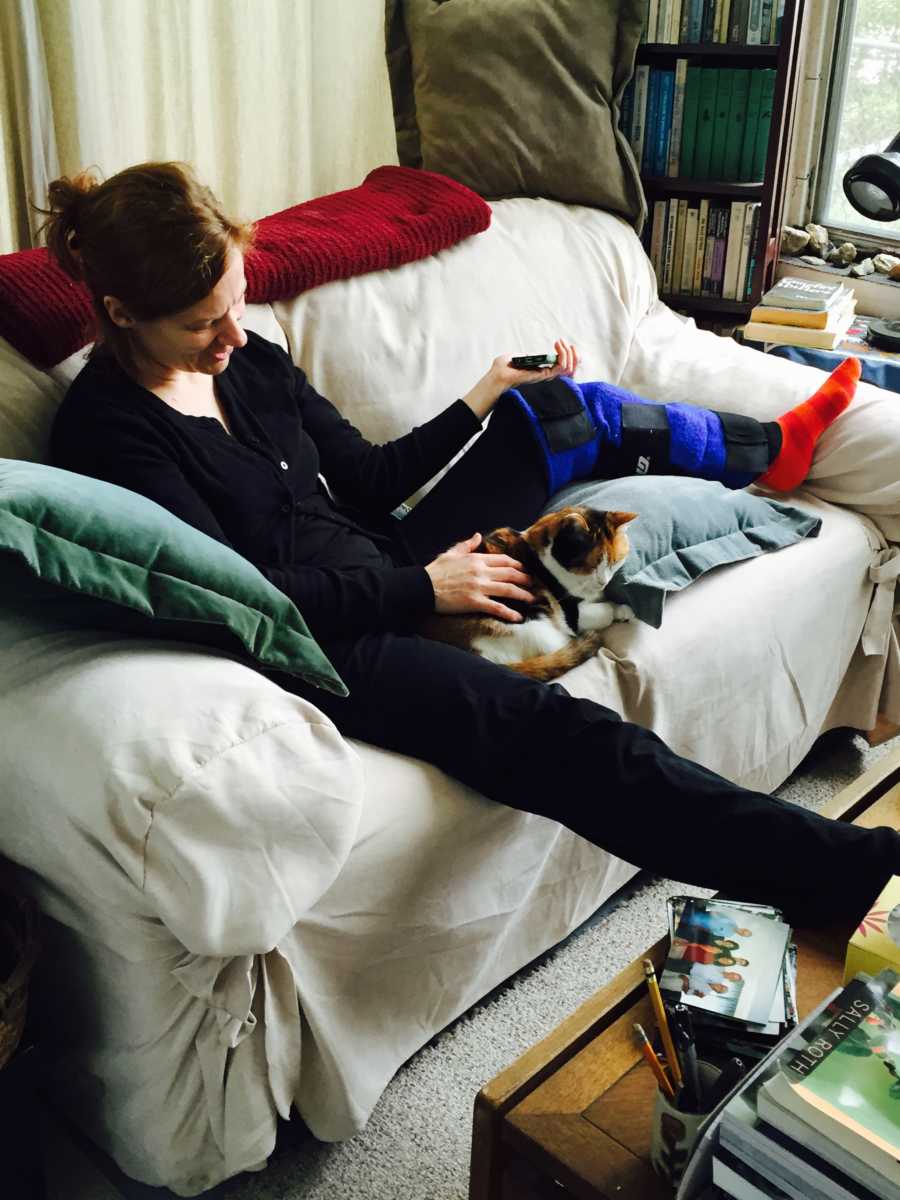
But I did not know about any of this then. All I knew was pain, this pain had increasingly taken over my life and ravaged my body, all but ruining my career, my relationships. And even my confidence in my own perceptions of reality after years of doctors telling me the pain was ‘all in my head.’ I was bereft, demoralized, and quickly losing hope.
And then, in June of 2019, I stumbled upon a happy confluence of research, books, people, and an app called Curable, radically transforming the course of my life. I discovered the game-changing new neuroscience of chronic pain hinging on this notion of neural pathways, and it gave me hope. Neuroplasticity was what got me into this mess, and I was damned if it wouldn’t get me out of it. I studied this stuff like it was my job. I learned tools to reliably calm my nervous system and soothe my amygdala, dramatically reducing the intensity of the pain.
I used a tool called ‘graded exposure’ to begin to walk without crutches again. I started with walking from my bed to the mailbox. Since it did not increase my pain, I walked a little bit further the next day, and a little bit further the day after that. Pretty soon, I was walking all the way up my street to the park on the grassy hill, and before long I started logging five or six miles on my Fitbit each day.
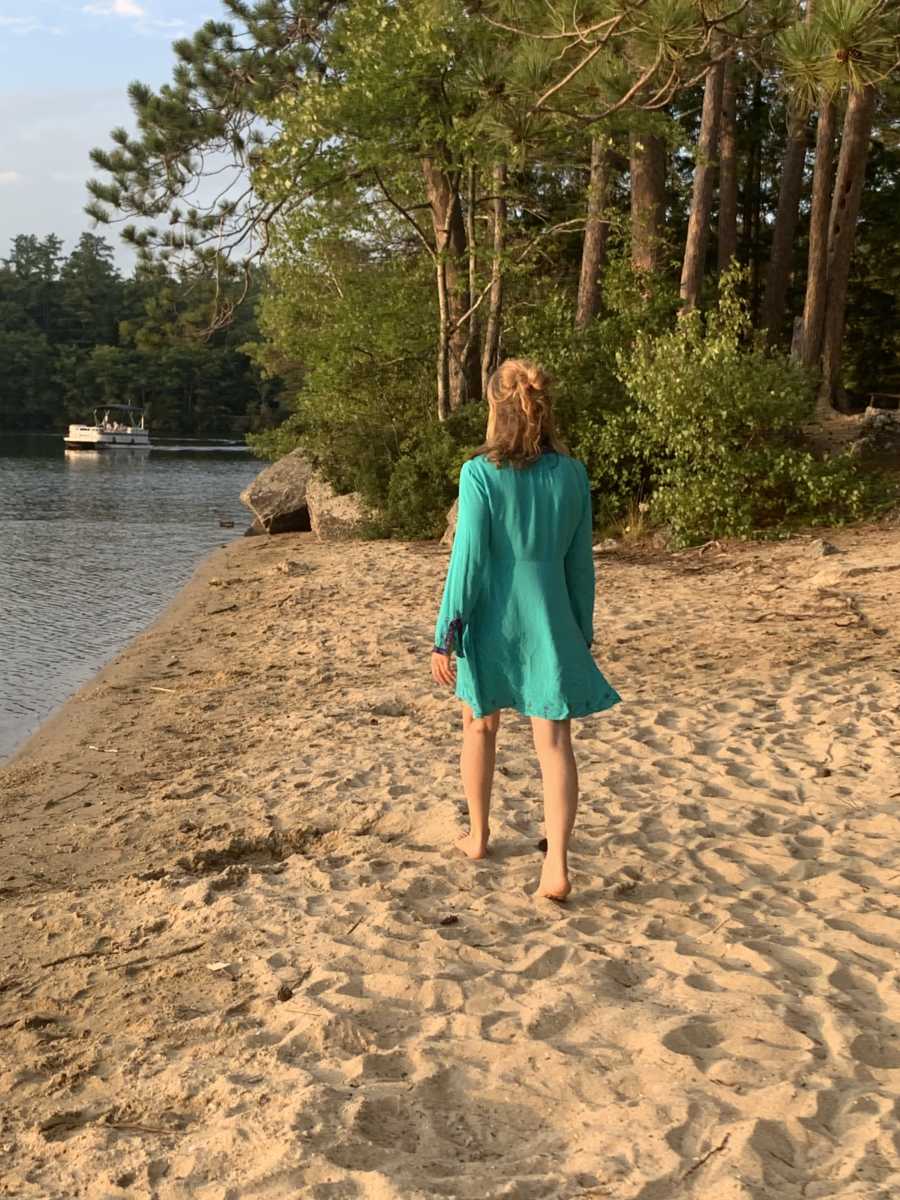
I joined a group of people who, like me, lived with unrelenting chronic pain and other symptoms, and thrived with the support of my new friends. For the first time, I did not have to explain my pain—they knew what it was like to cancel everything and sit on the sidelines of your own life. Together, we mastered these tools to calm our bodies and reduce the pain.
Learning these new strategies has been such an empowering experience for me, leading me to start my own coaching business, The Sage Practice, helping others living with pain learn how to reclaim their lives. This is incredibly rewarding work, and it combines my teaching background with my personal experience of pain. I know what it is like to be in pain, and I know what it is like to claim agency over that pain and reduce its intensity to the point where it barely registers anymore.
In short, I feel as if my body had been pinned beneath boulders for 29 years, leaving me to watch life go by from the sidelines, and then I learned how to free myself. So that is why I have this glint in my eye, the smile you can see even in spite of the mask covering my face, the happiness radiating from my body, even during this horrible pandemic.
I have just run up that little grassy hill on my own two legs. Buddy and Gimp have stayed with me all these years, after several near-misses when I could have lost them both. Simply by comparison to how I was just a year ago, I feel as if I am not only running, but flying.
I am deeply honored to share my story just in case anyone out there reading this, in their own dark night of the soul, might see the light of hope in my experience and know they too can find relief from their suffering. And even beyond relief, joy. If anyone would like to learn tools to reclaim your life from pain, please do not hesitate to reach out to me. I want to share the joy far and wide.”
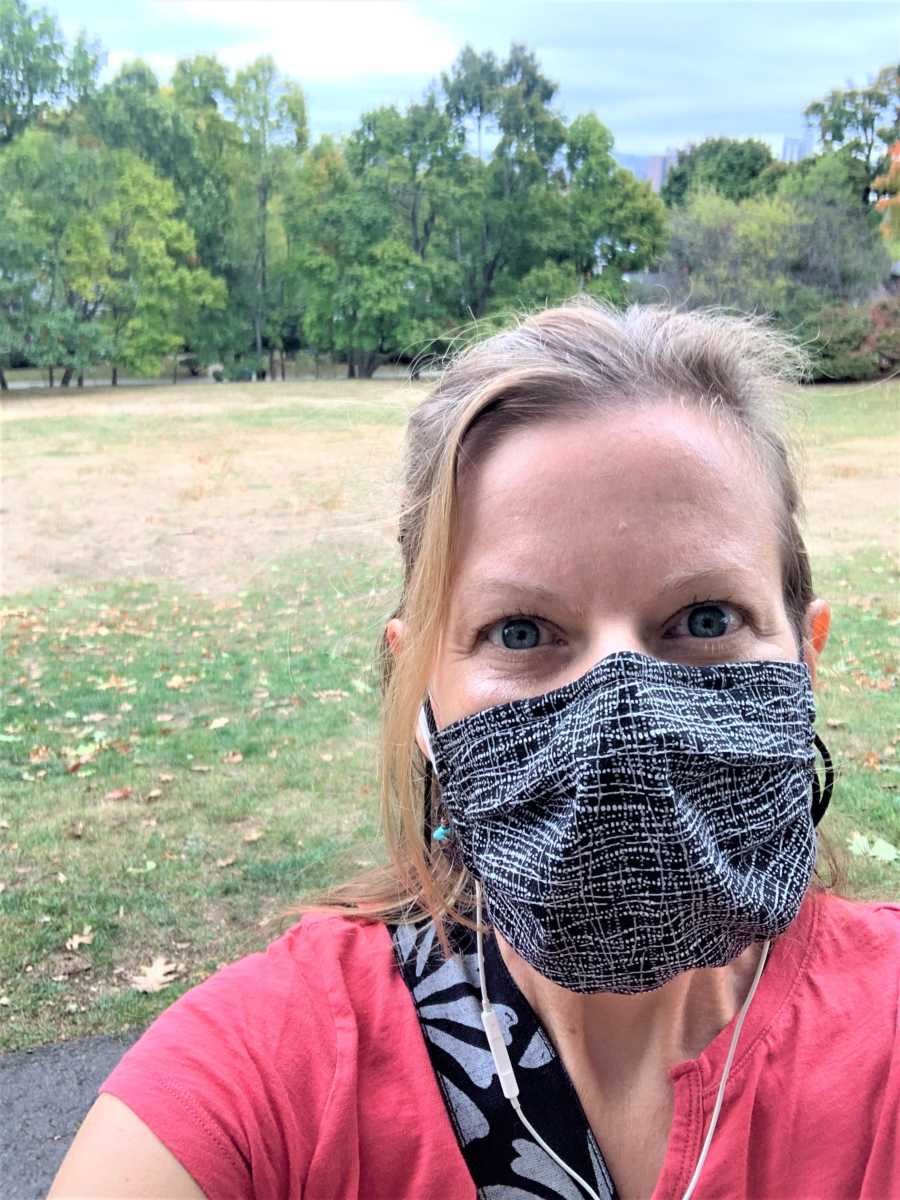
This story was submitted to Love What Matters by Lara Birk, Ph.D. You can follow her journey on her website, Instagram, and Facebook. Submit your own story here, and be sure to subscribe to our free email newsletter for our best stories, and YouTube for our best videos.
Read more from brave chronic illness warriors:
Do you know someone who could benefit from this story? Please SHARE on Facebook and Instagram to let them know a community of support is available.

